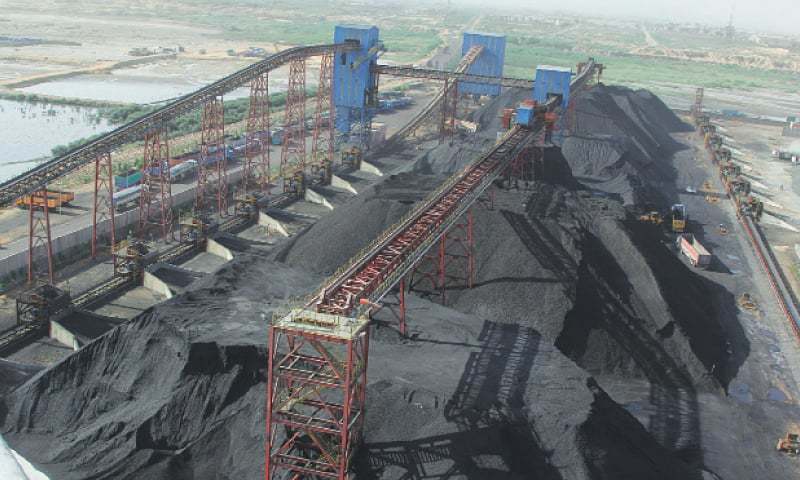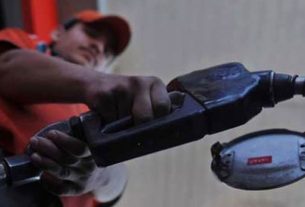Pakistan’s consumption of imported coal is projected to rise by a little more than a quarter to between 20 and 22 million tonnes in five years as new cement capacity and power plants based on (imported) coal gradually become operational.
The country’s current coal imports are estimated to increase to over 16m tonnes by the close of the present financial year from around 13m tonnes a year ago, according to Sharique Azim Siddiqui, the chief executive officer of Pakistan International Bulk Terminal (PIBT).
“The use of coal has increased sharply in the last five years from 3.4m tonnes in 2013; the growth is driven primarily by significant capacity expansion undertaken by the domestic cement industry and addition of public and private coal-based power generation of 3,300 megawatts under the China-Pakistan Economic Corridor (CPEC) initiative,” the CEO of Pakistan’s first dirty cargo terminal told this correspondent in an interview.
“We are expecting substantial expansion in cement manufacturing capacity over the next two to three years followed by the completion of the imported coal-based projects of at least 1,320 megawatts, pushing the country’s (imported) coal use to a new level.”
‘Handling of cement and clinker is as polluting as coal. The government should divert their export operations to Port Qasim to protect the citizens from pollution’
The terminal, which has a capacity to annually handle 12m tonnes of coal and 4m tonnes of cement and clinker at Port Qasim, expects to handle coal imports of 8-10m tonnes during this financial year. Additionally, the three coal-fired power plants — Sahiwal, Port Qasim and Hubco — have their own jetties for handling their own fuel imports of around 8m tonnes a year.
Mr Siddiqui’s forecast of the country’s future requirements of coal imports over the next five years is in sharp contrast with earlier projections of 30-40m tonnes by 2025. His estimate of growth in the imported coal consumption largely hinges on a significant pickup in domestic cement demand. The way things stand today in the construction industry and a slowdown in public development investment, he added, the increase in coal imports can be slower than expected.
In another scenario, he says, coal imports can also peak to 26-28m tonnes for a year or two if the under-construction power stations based on Thar coal felt the need to temporarily meet their requirements in their early years of operation through imports along with the surge in demand from cement factories.
The handling of coal shipments by the country’s only bulk terminal has risen sharply after a Supreme Court directive to shift the entire coal trade operations to Port Qasim to protect Karachi from pollution. But the firm, which suffered a pre-tax loss of Rs3.2bn in the first year of its operation in 2017-18, is facing problems in attracting cement and clinker exporters because of a very high royalty fee of $2.27 per tonne charged by Port Qasim authorities.
“Some 40 per cent of our total revenues go to Port Qasim. Cement and clinker exporters consider the royalty fee to be very high. The massive currency devaluation has further increased the cost of royalty fee in terms of rupees. Hence, they prefer to ship their consignments from Karachi Port with only a fraction of the cement and clinker exports coming the PIBT way,” Mr Siddiqui said.
Moreover, he points out, the absence of a four-kilometre train track connecting the $315m terminal with the railway network is also preventing its full capacity utilisation. Currently, it is transported through trucks, which is a burden on the environment in addition to being costly and time inefficient. The railway is the best way to transport goods, especially coal. It has a reduced carbon footprint. Globally, railway companies make money from freight. In the case of Sahiwal Power Project, the government had ensured that Pakistan Railways connected to its jetty.
The terminal performance is also limited by the channel, which is only 13-metre deep. If the channel was deepened further, the terminal could handle larger vessels that would benefit importers by reducing the cost of import. Additionally, when there is an LNG vessel movement in the channel, Port Qasim does not allow any other vessel to move, which delays our operation, he said.
Nevertheless, the PIBT management hopes to reduce its losses this year because of the increased coal import business that the terminal has handled. “Cement and clinker handling is as polluting as coal. The government should divert their export to Port Qasim to protect the citizens of Karachi from pollution. One way of attracting cement and clinker exporters to Port Qasim is the reduction in the high royalty fee. The handling of cement and clinker exports by PIBT will help reduce the shipment time for exporters besides allowing us utilise our full capacity,” the CEO said.
The bulk terminal can handle about 60,000 tonnes per vessel in 1.5 days or less as opposed to Karachi Port where a similar job takes around five days. “These are the efficiencies that lower handling and shipment costs besides ensuring environmental benefits. It is because of the environmental benefits that the World Bank has financed the terminal and co-owns the project,” he added.



